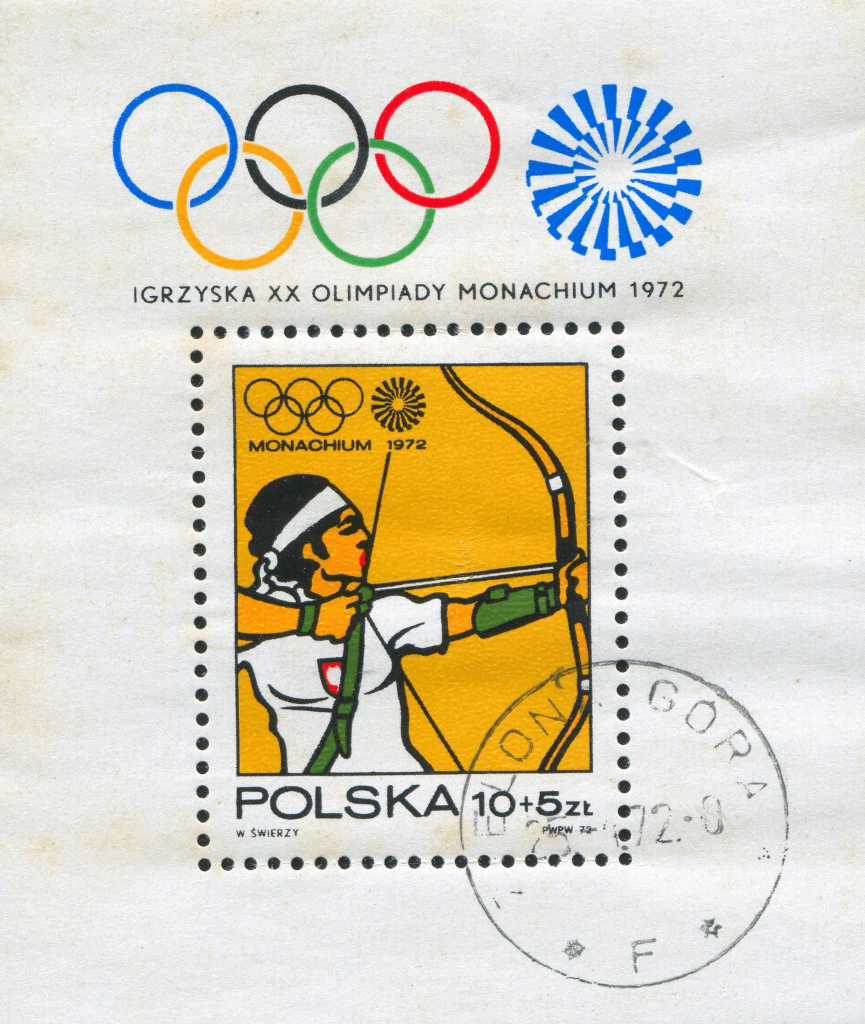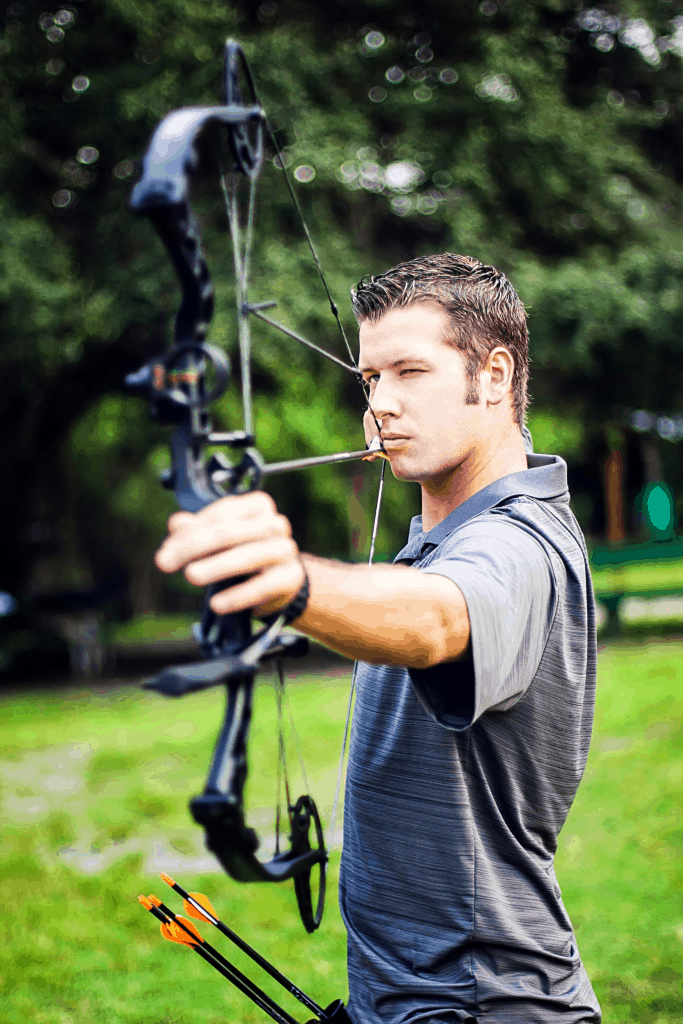
Archery is one of the oldest sports in the world, so it’s no surprise that it would be included in the Olympic Games. If you watched the Summer Olympics closely, you will have noticed that all of the archers’ bows looked similar. There’s a specific reason for that.
Recurve bows are the only kind of bow allowed in the Olympics. One popular model used by Olympic archers is the Hoyt Prodigy recurve bow. There have been pushes to allow compound bows in the Olympics, but none have been successful.
The history of Olympic archery is rich and interesting. This article will dive deeper into how it’s evolved and why recurves are the bow of choice.
Why Recurve Bows?
It seems almost counterintuitive to use recurve bows in such an important archery competition when compound bows have seemingly improved the design of bows in nearly every way.
Surprisingly, there are some pretty good reasons for the exclusionary rule, and it has to do with a lot more than just tradition.
A Level Playing Field
The Olympics is an athletic competition that includes teams from all over the world.
What most of us don’t think about when we watch the Olympics at home is how much work it takes to make sure that the teams from each country are on an equal playing field when they compete.
Think about it from the perspective of the people producing the event: just like anything else on TV, it depends on good ratings and a decent-sized audience.
There’s no drama in an easy victory.
No one wants to watch a competition in any sport where one team or one individual athlete is easily victorious.
Nor do athletes want to compete in an event where they are clearly at a disadvantage.
In order to make sure that there is a genuine struggle among archers to beat each other, Olympic officials have restricted the kinds of bows allowed in the Games to the recurve bow exclusively.
Despite the many requests to allow the compound bow, the organizers of the Olympics have been reluctant to do so because of the disparity it would create among skill levels in teams from different parts of the world.
Compound bows have become incredibly popular in the western part of the world, mainly Europe and North and Central America.
In the eastern part of the world, however, compound bows have not taken off in quite the same way.
Most archers from Australia, Asia, and Africa are still partial to recurve bows, and the Olympic archers are no exception.
So, if compound bows were suddenly allowed to be used in the Olympic Games, it would throw off the system greatly.
How do you determine the winner between a recurve archer and compound archer?
The decision process would take a lot longer as officials would have to take into account the advantages and disadvantages the two bow models present and how the archers performed given those variables.
It’s clear to see why the Olympic staff would be reluctant to throw new variables into a judging process that’s currently pretty straightforward.
Compound Bows are Overpowered

Another convincing reason to leave compound bows out of the Olympics is their excess of power.
Compound bows are mostly designed and intended for hunting purposes.
Because they’re trying to take down a moving target and effectively kill it, bowhunters need a lot of power in their bows.
This isn’t to say that recurve bows can’t be made to have a lot of power.
In fact, you can buy a recurve bow with a 70-pound draw weight, which is typically what bowhunters need for medium-sized game like deer.
However, compound bows’ cam system (the main thing that separates them from traditional bows like recurves) typically adds a lot of speed and kinetic energy that recurves just can’t compete with.
And in the case of the Olympics, archers just don’t need that much power.
They’re not trying to pierce the heart of a living animal with enough force to kill it, they’re just trying to get the arrow to the target and make it stick.
For this purpose, you typically don’t need more than 40 or 50 pounds of draw weight.
Maybe someday compound bows will become popular enough across the globe to justify use in the Olympics, but we’re not likely to see that change any time soon.
A Guide to the Olympic Recurve Bow

It’s true that recurves are simpler than their compound counterparts, but the bows seen in the Olympics don’t often look simple.
At least, not as simple as the elegant wood recurve bow Lord of the Rings fans see Legolas taking down orcs with.
No, the bows used in the Olympics are often adorned with various accessories that make it look as complicated a weapon as any.
Most prominent are the stabilizers, which are usually long metal rods sticking out from the bow’s frame.
Stabilizers can come in many sizes and materials, and some archers have more than one attached to their bow.
The purpose of a stabilizer is to stabilize, just like it sounds.
Balance is an incredibly important part of archery, and stabilizers can help to equalize the weight of the bow in the archer’s hands so that they don’t have to worry about it while they’re focusing on their aim.
The stabilizers also absorb shock and vibrations that are caused by the release of the arrow, preserving the archer’s arms so that they continue to shoot without numbness in the arms.
Shock is also absorbed by the plunger, a small accessory typically situated near the rest where the arrow sits before it’s released.
Most, if not all, Olympic archers also choose to include a sight in their setup.
There are different kinds of bow sights, but they are generally circular pieces of metal or plastic with internal instruments that allow the archer to line up the shot.
Bow sights can be seen attached to the bow’s frame just above the riser, parallel to the archer’s head.
The bow sight is often used with a smaller, less obvious peep sight, a small ring made of metal or plastic that the archer inserts into the string of the bow.
Like the sights on a firearm, the archer looks through both sights and lines them up to aim their arrow at the target.
Lastly, Olympic archers sometimes use a clicker, a gadget that attaches to the arrow rather than the bow.
The clicker is a metal wire placed on top of the arrow, spring loaded to make an audible clicking sound once the arrow has been fully pulled back.
The noise alerts the archer that the arrow is ready to be released.
If you watch the archery events in the Olympic Games, you may be able to identify some of these gadgets on archers’ bows and even spot a few more that you haven’t yet learned about.
Common Olympic Recurve Models

The exclusivity of bows in the Olympics isn’t just limited to type.
Though not enforced by the Olympic officials, bow brands are also pretty much the same across the board.
This is especially true in regards to the fundamental pieces of equipment used, which consists of the bow’s riser and limbs.
Most recurve bows nowadays are takedown recurves, meaning that the bow’s limbs can be detached from the riser, usually by being unscrewed.
This gives archers the choice of what parts they use, but in the Olympics, nearly everyone goes to Hoyt Archery for these products.
Among nearly all Olympic medalists in archery, Hoyt Archery has been the choice for both risers and bows.
For risers, the Hoyt Prodigy RX and the Hoyt GMX have been the most popular choices, accounting for 20% and 16% of the risers seen at the Olympics respectively.
For limbs, Hoyt’s Quattro model has been the most successful, accounting for 45% of the limbs used in the Olympic Games.
Maybe it has something to do with the fact that they’ve been making archery equipment since 1931, but whatever the reason, it’s clear that Hoyt Archery has a significant presence when it comes to Olympic gear.
Since being introduced to the Olympic Programme in 1900, archery has been a compelling competition to watch.
If you aren’t following Olympic archery already, make it a priority now that you can appreciate the intricate details of the equipment involved.
